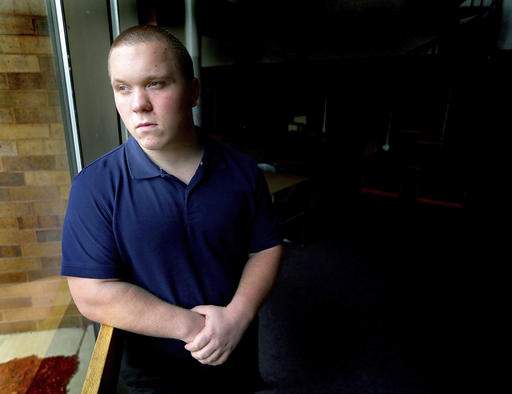
Associated Press: Zade Johnson was 17 when he first became homeless.
The Logan High School senior arrived home on a November 2015 night after a call from a social worker and found two police cars parked near his home, the La Crosse Tribune reported. His mom, an alcoholic, was drunk again, he recounted, and had kicked Johnson’s case worker out of the house.
When he arrived, he said, she charged at the police and Johnson. His younger brother was taken into foster care, but the police told Johnson he couldn’t stay there and had to find somewhere else to live.
“At that moment, all I could think about was: ‘How could she do this to us?'” he said.
Johnson is not alone in struggling with homelessness. Last year, the Wisconsin Department of Public Instruction reported 180 homeless students in the La Crosse School District, the highest number reported at the school during the 13 years the DPI has collected data, and more than a third of the total homeless student population in the region that year.
Too old for the foster program, Johnson stayed first with the family of a Logan staffer, and then with his father for a few months before finding a home with a family he was close to at church. A volunteer with the Boys and Girls Clubs of Greater La Crosse and a member of the U.S. Army National Guard, Johnson said the support from people around him helped keep him from falling through the cracks at school.
Staff members encouraged him to enroll in Logan’s LaCrossroads program when his grades slipped in math. The Boys and Girls Clubs were a second home for him, and the family he lives with now in Onalaska helped teach him to drive and encouraged his passion to become a professional umpire.
“They really taught me a lot,” he said of the two families that took him in. “I had to grow up so early, but they were such great role models.”
At any given time, 1 or 2 percent of the students in the district are homeless, La Crosse Superintendent Randy Nelson said. Ensuring students succeed in these situations, when their entire world may be turning upside down, is a big challenge for educators, especially as the issue gains more federal attention through the new Every Student Succeeds Act, which replaced the No Child Left Behind legislation.
The majority of students who report being homeless are in elementary school, said Regina Siegel, La Crosse’s director of pupil services and learning supports. Those number taper off in middle school and high school, but she said the stigma attached to homelessness might lead to under-reporting.